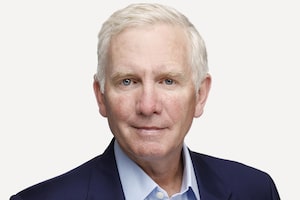Editorial cartoon by Brian GableBrian Gable/The Globe and Mail
Last week's election results provoke serious thought about the future of the Liberal Party.
The 2006 and 2008 elections showed Liberals the futility of defying the laws of mathematics. Too many parties splitting the votes that were accessible to them had a pretty good chance of ending in tears.
During those years, the Liberals enjoyed a huge advantage in terms of size, prominence and financial muscle over the New Democrats. One way or another, they needed to convert a good number of NDP-leaning voters to the Liberal side. It didn't happen and if the Liberal Party is going to recover, this needs to be job No. 1.
Of course, a merger is only one way to accomplish this goal - and arguably not the best way, given the severity of Liberal losses suffered last week.
The math challenge is still pretty much the same, but now the hill to climb is steeper. And the NDP are squarely in the Liberals' path, with more money and a bigger share of voice. Nevertheless, the Liberals have more than a little to work with.
First, there's overwhelming evidence that what will eventually win against the Conservatives, when more voters want a change, is a party of the centre not a party of the left. About 60 per cent of voters cluster around the centre of the spectrum. They believe Canada works best when we blend fiscal prudence and free markets with a tolerant, compassionate approach toward our fellow Canadians and people in other parts of the world. They reject far-right, laissez faire economic policies and social engineering from a conservative standpoint, and are just as dismissive of the ideas of the more radical left.
Many Liberals are allergic to the idea of a merger with the NDP, which makes sense if the alternative is a serious effort to rebuild a powerful party of the centre. Not just to wait for the ships to come in, the Conservatives to fail, the NDP to embarrass itself - or for a compelling leader to provide a shortcut.
But if avoiding radical left or right ideas is necessary for the Liberals to recover, it's also insufficient. Voter disengagement is partly a rejection of negative politics, but it's just as much about boredom with what's on offer. Political compasses are used to navigate away from risk. Bigger, bolder ideas attract shelling and create controversy. Pundits raise eyebrows, advisers advise caution and big ideas get smaller, or disappear.
It's easy to read the public mood as though voters want politicians to have modest aspirations, to stay out of our pockets and out of our way. But this analysis, if technically accurate, is also incomplete. Voters are more likely to re-engage around big ideas than smaller, "better management" style propositions. Canadians are not opposed to grand projects simply because they are large. Stéphane Dion's Green Shift didn't sell, but not because it was a big idea.
For the Liberal Party, the surest path to success lies not in avoiding risk, or simply not being too right or too left. Many of those who voted Conservative or NDP will reconsider the Liberal Party if and when it offers dynamic, creative, and yes, bigger and bolder ideas for the country and its future.
 Bruce Anderson
Bruce Anderson